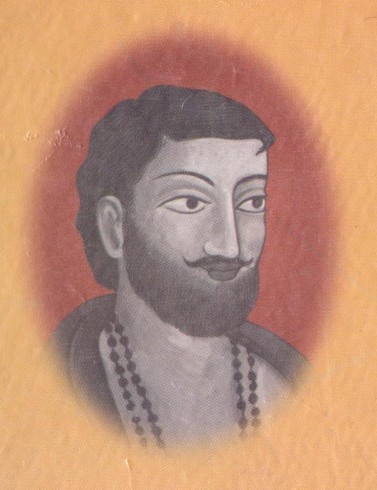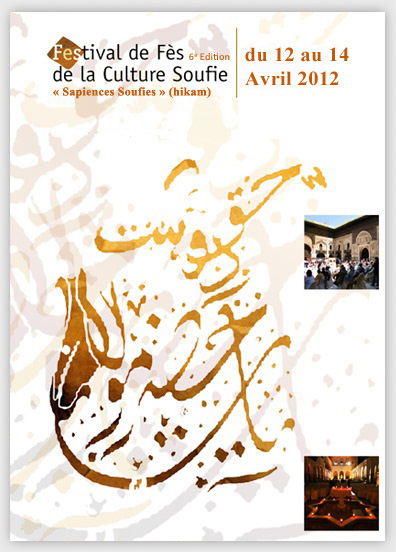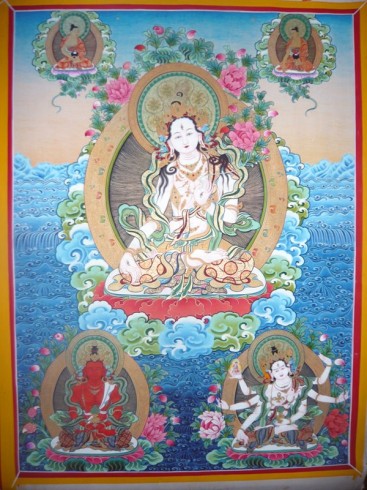Search results for sufi (23)
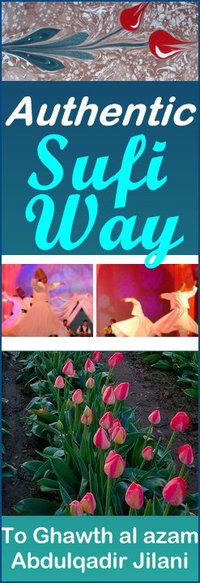
AUTHENTIC SUFI WAY – International Qadiriya Foundation *~ a sholar from the Quadiri Sufi Order *
http://www.qadiriyya.com
Sayyid Muhammad Efendi of Istanbul
————————————-
(photo: Sayyid Muhammad Efendi with his sufis)
A great sufi story from the time of prophet David! – By Sheikh Sayyid Muhammad Efendi
————————————-
The story of a lazy person and a butcher
A lazy person was praying without getting fed up and without giving up saying „O my Lord! I want sustenance from you without difficulty and suffering. As it is observable that, the creatures with feet search for food, but, you bring the food to the ones without feet.“ Allah almighty has accepted the prayer of this person due to his continuous persistence. One day while this person was praying, an ox has come to his garden. The man has thought „Allah almighty has accepted my prayer“ and cut the ox and run to bring the butcher to skin it. The real owner of the ox was the butcher, when he had seen the ox he had lost was cut by this person of poverty, he had got hold of his collar saying „why have you cut my ox“. Despite that poor person saying „Allah has accepted my prayer and sent this ox to me“, the butcher had pulled and brought the poor person to prophet David (Dawood) AS saying „if posessions were obtained thorugh prayers, all the beggers would have been people of posessions“.
The general public had gathered to listen to the the arguments between this poor person and the butcher. Prophet David AS after listening to the butcher and the poor person had asked: „O poor person! do you have an evidence that can be accepted by the religious commandments? Is this ox a donation to you, or have you inherited it? If you don’t have an evidence acceptable by the religious law, pay your debt to this man.“ The poor person had pleaded with Allah almighty upon the jurisdiction of prophet David AS, he had shed tears and prayed saying „O my Lord! give a light to the heart of David!“. Upon this, David AS had said to the butcher who is the claimant: „Give me respite for today so that I go into seclusion, pray and I give jurisdiction on your case tomorrow.“ and sent them home.
Prophet David has been into seclusion that night and he had learned the inner secret of the matter. The public had gathered together in the morning. The butcher comes there ans says haevy words to the poor person. When prophet David comes out he says to the butcher: „O butcher! abonden this claim of yours and donate the ox to this Muslim, and get away from here, as God almighty had covered your secret. Be thankful to Him for this reason.“ The butcher disagrees with the words of the prophet and said harsh words: „O David! your justice is spread over the West and the East. What kind of jurisdiction is this while you justice is filling the earth and the haevens, you have been cruel to me.“ The public also sides with the butcher and start criticizing the prophet. Allah almighty had been hurt by the ciriticizing words of the butcher to His prophet and He reveals the inner reality of the event to the public.
Thus, prophet David says his jurisdiction to the public as: „Go to this place, you will see a tree there. This man has killed his owner and buried under that tree. He had also left the knife he had used for killing next to him. This man was a slave of that person. He came together with a female slave of his owner and killed him. He then had claimed his posessions and goods. This poor person is the son of that man. Despite Allah almighty covering it, this ungrateful man has opened that cover veil himself, and show his sin himself. There will be retrubution for the butcher. His wife and children are the slaves of this poor person. And all the posessions and the goods of him belong to thid poor person, as the posessions of a slave belong to the owner.“
Abd al-Qadir al-Gilani (Persian: عبد القادر گیلانی,Urdu: عبد القادر آملی گیلانی AbdolqÄ�der GilÄ�ni) (also spelled Abdulqadir Gaylani, Abdelkader, Abdul Qadir, Abdul Khadir – Jilani, Jeelani, Gailani, Gillani, Gilani, Al Gilani, Keilany) (470–561 AH) (1077–1166 CE) was a Persian Islamic preacher who is highly esteemed by Sunni scholars. Among followers in Pakistan and India, he is also known as Ghaus-e-Azam. He was born on a Wednesday the 1st of ramadan in 470 AH, 1077 CE south of the Caspian Sea in what is now the Mazandaran Province of Iran.
http://www.poetseers.org/spiritual_and_devotional_poets/sufi
http://en.wikipedia.org/wiki/Jilani
http://www.urdupoetry.com/index.html
http://en.wikipedia.org/wiki/Urdu_poetry
http://www.facebook.com/Kadiriyye
http://www.facebook.com/Authentic-Sufi-Way
SUFISM – Mowlânâ Jalâl-od-Dîn Rûmî UNESCO World Heritage Shams-i Tabrizi & the freedom of religion or belief.
Mowlânâ Jalâl-od-Dîn Rûmî et l’ordre mevlevi des derviches tourneurs
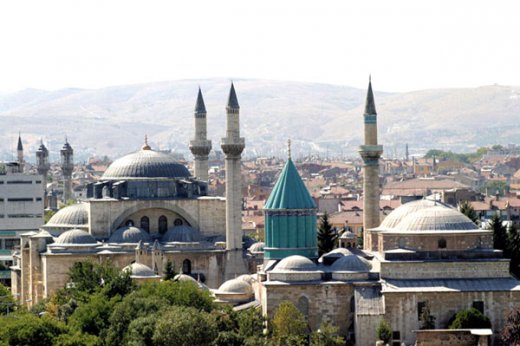
- Mausolée de Rûmî à Konya, vue d’ensemble
His epitaph reads: "Do not seek our tombs on this earth - our tombs are in the hearts of the enlightened."
http://mevlana.net/unesco_address.html
http://www.sacred-destinations.com/turkey/konya-mevlana-museum.htm
Rûmî est né à Balkh dans le grand Khorâssân iranien (l’antique Bactres de l’Empire achéménide, aujourd’hui en Afghanistan) en 1207 (604 de l’Hégire), mais il dut quitter sa ville natale avec sa famille à l’âge de 14 ans. Les raisons de ce départ, variant d’un hagiographe à l’autre, sont attribuées soit à la contestation des habitants de la ville à propos du titre de Sultan des savants donné à son père, le grand érudit Bahâ-ud-Dîn-Walad, théologien et prédicateur éminent, soit à un différend entre celui-ci et le philosophe attitré du roi, ou encore à la fuite devant le danger que représentait alors l’avancée des hordes mongoles parcourant la steppe, ou peut-être une accumulation de tous ces événements. De fait, la ville de Balkh fut détruite par Gengis Khan peu après que Rûmî l’eût quittée.
Après être passés par Neyshâbour (où Rûmî rencontre le grand poète mystique Attâr), La Mecque, Bagdad, ils s’installèrent à Konya, dans l’Empire ottoman, à l’invitation du sultan Key Ghobâd, comme de nombreux Persans fuyant les hordes mongoles. Son père meurt dans cette ville, alors que Rûmî n’a que 24 ans. Un an plus tard, il suit l’enseignement de Termazi, grand théoricien de Konya qui l’envoie étudier à Alep et à Damas afin d’y parfaire ses connaissances philosophiques et théologiques. C’est à Damas qu’il rencontrera pour la première fois le derviche Shams Tabrizi, qui transformera sa vie en faisant de lui un mystique extatique.
Le collège où Rûmî, docteur en théologie, enseigne jurisprudence et loi islamiques, est fréquenté par de nombreux disciples. A 36 ans, on commence à l’appeler Mowlânâ, notre maître. Son érudition attire à Konya les plus illustres savants du monde dit civilisé.
On rapporte que c’est au cours de sa retraite de quarante jours en compagnie de Shams Tabrizi à Konya qu’il se met à tournoyer à la manière des derviches tourneurs et apprend à jouer du luth. « Plusieurs voies mènent à Dieu, j’ai choisi celle de la musique et de la danse », écrira-t-il. C’est en tout cas après cet épisode décisif de sa vie qu’il fonda la tarîqa mawlawiya ou confrérie mevlevi.
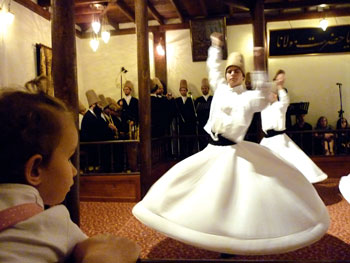
- Cérémonie à la loge mevlevi de Bursa http://www.allaboutturkey.com/konya.htm
Photo : Eric Nosjean
L’ordre mevlevi des derviches tourneurs de Turquie
Comme Rûmî l’avait souhaité, Hessâmeddin Tchalabi, son disciple dès l’adolescence, devient son successeur spirituel lorsqu’il décède en 1273. C’est Hessâmeddin qui écrira et mettra en forme le Masnavi, la grande œuvre de Rûmî, tandis que celui-ci lui en récitait les poèmes. Guidant la communauté fondée par son maître, Hessâmeddin fit en sorte qu’elle continue à respecter les idées et les principes du défunt. Quand Hessâmeddin meurt à son tour en 1284, Soltân Walad, fils aîné de Rûmî, devient le sheykh des Mevlevi : il organise ses disciples en un ordre soufi véritable avant que son propre fils, Aref Tchalabi, ne lui succède en 1312. Une chaîne de successions directes rattache le maître actuel de la Mawlawîya à ses prédécesseurs.
Après la mort de Rûmî, l’ordre des mevlevis connaît une ascension notable sous la protection des sultans seldjoukides et ottomans, se déployant jusque dans le monde arabe et les Balkans. Il cultive la poésie persane (Rûmî s’exprimait et écrivait en persan), la musique, la calligraphie, et codifie ses cérémonies, dont la danse, dans ses tekke – ou monastères derviches – des principales villes de l’empire.
La progression spirituelle du soufi mevlevi s’inscrit dans le cadre d’une retraite de mille et un jours consistant en périodes de silence, d’isolement en cellule, d’étude et de corvées domestiques. Ce temps de formation s’accomplit en grande partie dans la cuisine du monastère, lieu hautement initiatique, où le novice est lentement mené à maturité spirituelle. Il s’initie à la musique et à la danse, à la lecture du Masnavi, au zikhr (invocation répétitive des noms divins) et à la méditation. Cette initiation est clôturée par une cérémonie d’investiture qui fait du novice un sheikh. On lui remet alors deux attributs symboliques, le manteau (le souf) et la coiffe rituels. Il peut ensuite choisir entre une vie de célibataire au monastère ou une vie de famille à l’extérieur, tout en restant lié à sa communauté, cas d’exception dans l’histoire du soufisme. … Read More http://www.teheran.ir/Mowlânâ Jalâl-od-Dîn Rûmî
Shams-i-TabrÄ�zÄ� or Shams al-Din Mohammad (born 1185, died ca.1248) was a Persian Muslim, who is credited as the spiritual instructor of Mewlana Jalal ad-Din Muhammad Balkhi, also known as Rumi and is referenced with great reverence in Rumi’s poetic collection, in particular Diwan-i Shams-i Tabrizi (The Works of Shams of Tabriz).
Tradition holds that Shams taught Rumi in seclusion in Konya for a period of forty days, before fleeing for Damascus. The tomb of Shams-i Tabrizi was recently nominated to be a UNESCO World Heritage Site.
Sufism or taṣawwuf (Arabic: تصوّف) is defined by its adherents as the inner, mystical dimension of Islam. A practitioner of this tradition is generally known as a ṣūfÄ� (صُوفِيّ). Another name for a Sufi is Dervish.
Classical Sufi scholars have defined Sufism as „a science whose objective is the reparation of the heart and turning it away from all else but God“. Alternatively, in the words of the Darqawi Sufi teacher Ahmad ibn Ajiba, „a science through which one can know how to travel into the presence of the Divine, purify one’s inner self from filth, and beautify it with a variety of praiseworthy traits“. http://en.wikipedia.org/wiki/Sufism
About http://iranculture.ca/dev/
The development of the role of cultural relations and the growth of attention devoted to its aspects is closely connected with modern development of civilization and with the development of international relations along with the continuous increase in their intensity.
Culture is inseparably connected with not only international cultural relations, but also to create the necessary conditions for the harmonic development of human society. In other word Culture is reflected in all human activities and in their results.
Cultural relations have great significance for international relations from the viewpoint of how well cross-cultural communication functions. According to expert analyses inefficacy of international negotiations is from up to 70% caused by mutual misunderstanding of members of different cultural systems. In the first place the recognition of one’s own culture and at the same time also obtaining knowledge about different cultures and their environment belong to the main pillars of proper communication.
Regarding to the above mentioned points, Iran Embassies in abroad try for expansion of cultural ties with the countries in all around the world and believe that based on key role of culture in International Relations, cooperation in this field could help promote bilateral and multilateral economic, political and social activities as well.
The Cultural Centre of Iran in Canada also believes that there is need for promoting Tehran-Ottawa cultural exchanges and do its best for achieving cultural goals of the two countries in different fields including cinema, arts, language teaching ,exchange of views and etc .
Iran’s great potential in the field of tourism is also essential in this regard. Iran is open to tourists from all over the world and over 1,500,000 tourists visit various cultural and historical sites in this country each year. Diverse climatic conditions as well as deep-rooted civilization have transformed Iran into a tourist hub. So it has the potential to create suitable grounds to further expansion of the tourism industry cooperation with Denmark. Activating such fields also could be the best opportunity for the exchange of views among intellectuals and scholars of the two countries.
The cultural Centre of Iran in Canada has the responsibility of coordinating Cultural activities in Canada; expansion of the cultural, scientific, educational religious, and artistic relations between two countries; introducing the Islamic and Iranian culture and civilization to the Canadian people; promoting and consolidating relations among Universities scientific and cultural institutions of the two countries.
Last but not least, as we constantly strive to improve out cultural operations, we would like to ask you to contact us and provide us with your questions or concerns on all aspects of our work.
http://www.iranhumanrights.org/
http://en.wikipedia.org/wiki/Shams_Tabrizi
http://en.wikipedia.org/wiki/Rumi
http://en.wikipedia.org/wiki/Diwan-e_Shams-e_Tabrizi
http://en.wikipedia.org/wiki/Dhikr
http://en.wikipedia.org/wiki/Qadiriyya
http://www.amnesty.org/en/economic-social-and-cultural-rights
UNPO Co-Hosts „Minority Rights In Iran“ Event At United Nations
http://www.ohchr.org/EN/Issues/FreedomReligion/Pages/FreedomReligionIndex.aspx
http://portal.unesco.org/800th Anniversary of the Birth of Mawlana Jalal-ud-Din Balkhi-Rumi
http://www.facebook.com/Hz. Mevlâna
http://www.facebook.com/MevlanaveSemsHz
http://www.facebook.com/LeCentreCulturelDIranAOttawa
http://www.facebook.com/Cultural-Centre-of-the-Islamic-Republic-of-Iran-Ottawa
#sufism Persecution
http://www.transparency-for-iran.org
http://www.hrw.org/middle-eastn-africa/iran
Iran: UN human rights body concerned over executions and minority rights
http://www.hrw.org/europecentral-asia/turkey
http://www.hrw.org/europecentral-asia/azerbaijan
Inspirations for Rio +20 Summit on #sustainable #development in #brazil: #private set of pictures #anatolia #turkey #tourism #***** hotel #spa tour autumn 2011:
http://www.flickr.com/photos/rumisuficelaleddinimevlana/

NATIONAL CONFERENCE ON „SUFISM“
Conference on Sufism „as mainspring of Love, Peace and Harmony“
Opening Date: Wednesday, 23 November 2011
Closing Date: –
Additional Information : at 3.00 p.m at Lok Virsa Islamabad
The Gilgit Agency was a political unit of British India, which administered the northern half of the Princely state of Jammu and Kashmir. The Gilgit Agency was created in 1877 and was overseen by a political agent of the Governor-General of British India. The seat of the agent was Srinagar. In 1935, the Gilgit Agency leased the territory comprising the agency from the Maharaja of Jammu and Kashmir, Hari Singh, for a period of sixty years. This lease and the Gilgit Agency ceased to exist when Pakistan and India became independent countries in 1947. HERE
LOK VIRSA – AN INTRODUCTION :
Lok Virsa (The National Institute of Folk & Traditional Heritage) works towards creating an awareness of cultural legacy by collecting, documenting, disseminating and projecting folk & traditional heritage. Surveys and documentation of traditional culture is central to the objectives of the institute. The Lok Virsa delve into and surveys are conducting by mobile recording and filming units. Dedicated individuals undergo the rigorous field work, to bring back valuable results to the central archives and production facilities housed at the Lok Virsa complex at Garden Avenue Shakarparian Hills Islamabad.
Lok Virsa is an affiliate member of UNESCO, The World Craft Council, International Council of Music, The Asian Cultural Centre for UNESCO, The International Council of Museums and similar other world organizations for the dissemination of art products abroad.
http://www.rferl.org/section/Pakistan
http://www.facebook.com/Gilgit Baltistan
http://www.facebook.com/kashmirsufismsociety
http://www.facebook.com/pakistanyouthforumpage
http://hunzalandslide.blogspot.com/
http://www.facebook.com/Indian Youth Climate Network(IYCN)
http://de.wikipedia.org/Hunza Burusho people, Hunza-Mythos
http://en.wikipedia.org/Former State of Hunza (princely state)
http://www.facebook.com/International Organization of Folk Art (IOV)
https://www.facebook.com/unesco Educational, Scientific and Cultural Organization (UNESCO)
Zamana is a public interest space for learning, reflection, and action on Pakistan.
Explore: Whose Land? Whose Food?
In its first issue, Zamana delves into the thorny subject of land and food rights in Pakistan. The focus is prompted by recent news reports that amidst rising hunger and food crises, the Government of Pakistan plans to give away thousands of acres of farmland to Saudi Arabia and other foreign investors. Zamana invites more commentaries on this issue. Please send your perspective to info @ zamana.org. Further Infos: http://farmlandgrab.org/
Act: Our Land, Our Food, Pakistan is not for Sale
Sign the petition to raise your voice against land leasing to foreign clients.
UPDATE 23.11.2011 Final Declaration: Stop Land-Grabbing Now!
The Oakland Institute http://www.oaklandinstitute.org
More than a hundred civil society organizations have submitted a document entitled „Time to Act – Agriculture and Food Security and Rio+20“ as input to the UN Conference on Sustainable Development (the Rio+20 conference). The submission outlines the key actions that are needed to achieve viable food systems based on agroecological and other forms of sustainable production.
http://www.facebook.com/oak.institute
http://www.ourworldisnotforsale.org/members
http://www.facebook.com/road2rio20
A global youth mobilization towards the UN Conference on Sustainable Development (Rio+20).
http://www.timetoactrio20.org/ 20 years after the Rio Earth Summit, the planet is in a deeper environmental, energy and financial crisis.The United Nations Conference on Sustainable Development (UNCSD) in Rio de Janeiro in 2012 might be just another high-level conference stating the need to eradicate hunger and poverty, stop climate change, the loss of biodiversity, soil erosion and other serious environmental problems – and then, after the conference, life goes on as before. But it can be different. It has a historical opportunity to make important decisions and agree on actions that actually do eradicate hunger and poverty, and save the environment. It’s time to act!
Many civil society organizations have signed on to a document with proposals on issues linked to food and agriculture for the Rio2012-conference. Download the document (PDF) HERE. Download the document in Word format (doc) HERE.
If you have comments and suggestions for changes in this document, and if your organization wants to support the document, please send a mail to rio2012agcso@gmail.com
The document is available in English, Spanish, French and German
UPDATE 24.11.2011 @guardian – Africa’s great ‚water grab‘ Foreign investors aren’t just after land in Africa. Access to water is essential – which can bring them into direct competition with the needs of local communities.
This article is about a right to water as a human right under international law. For a discussion of water usage laws in common law, see Water right. http://en.wikipedia.org/wiki/Right_to_water
WORLD CONFERENCE ON HUMAN RIGHTS
Vienna, 14-25 June 1993
VIENNA DECLARATION AND PROGRAMME OF ACTION
Note by the secretariat
Attached is the text of the Vienna Declaration and Programme of Action, as adopted by the World Conference on Human Rights on 25 June 1993.
1. The World Conference on Human Rights reaffirms the solemn commitment of all States to fulfil their obligations to promote universal respect for, and observance and protection of, all human rights and fundamental freedoms for all in accordance with the Charter of the United Nations, other instruments relating to human rights, and international law. The universal nature of these rights and freedoms is beyond question.
… Emphasizing that the Universal Declaration of Human Rights, which constitutes a common standard of achievement for all peoples and all nations, is the source of inspiration and has been the basis for the United Nations in making advances in standard setting as contained in the existing international human rights instruments, in particular the International Covenant on Civil and Political Rights and the International Covenant on Economic, Social and Cultural Rights…
http://www.unhchr.ch/huridocda/huridoca.nsf/%28symbol%29/a.conf.157.23.en
http://www.amnesty.org/en/economic-social-and-cultural-rights #video
Sufi Music Of Kashmir (Sufiyana Mousiqui)Part 1
Ghulam Mohamad Saznawaz is the only existing master of Kashmiri Sufiyana Music in the world. The most tragic part of Kashmiri sufiyana music is that with the Maestro Ghulam Mohamad Saznawaz the art will be lost to posterity, now very old with his age the mastero has opened a school to teach Kashmiri Sufiyana Music free of charge but this school does not attract many students from Kashmir because of the religious and social prejudice among the majority of Kashmiris. This is sad but its true that still musicians are considered as of a lower class or of low moral and as if they can not do something useful thats why they chose to be musician.
http://saznawazgharana.blogspot.com/
http://www.facebook.com/SuFiYaNa MuSiQuI Of KaShMiR
With the goal of uniting conservation, communities and sustainable travel, TIES is committed to promoting the principles of ecotourism and responsible travel around the world.
http:// www.disappearancesinkashmir.com/
http://www.hrw.org/legacy/reports/1999/kashmir/
Sufism International & the Hope Project
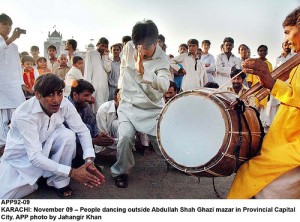
www.unesco.org/Intangible Heritage
Sufism or taṣawwuf (Arabic: تصوّف) is, according to its adherents, the inner, mystical dimension of Islam. A practitioner of this tradition is generally known as a ṣūfÄ� (صُوفِيّ). Another name for a Sufi is Dervish. Classical Sufi scholars have defined Sufism as „a science whose objective is the reparation of the heart and turning it away from all else but God.“Alternatively, in the words of the Darqawi Sufi teacher Ahmad ibn Ajiba, „a science through which one can know how to travel into the presence of the Divine, purify one’s inner self from filth, and beautify it with a variety of praiseworthy traits.“ Classical Sufis were characterised by their attachment to dhikr (a practice of repeating the names of God) and asceticism. Sufism gained adherents among a number of Muslims as a reaction against the worldliness of the early Umayyad Caliphate (661-750 CE[6]). The Sufi movement has spanned several continents and cultures over a millennium, at first expressed through Arabic, then through Persian, Turkish and a dozen other languages. „Orders“ (ṭuruq), which are either SunnÄ� or ShÄ�‘Ä� in doctrine, trace many of their original precepts from the Islamic Prophet Muhammad through his cousin ‘AlÄ�, with the notable exception of the Naqshbandi who trace their origins through the first Caliph, Abu Bakr. Other exclusive schools of Sufism describe themselves as distinctly Sufi. Read more: >here<
Naqshbandi (an-Naqshbandiyyah, Nakşibendi, Naksbendi, Naksbandi) is one of the major tasawwuf spiritual orders (tariqa) of Sufi Islam. It is considered to be a „sober“ order. The Naqshbandi order is nearly 1,500 years old, and is active today. It is the only Sufi order that claims to trace its direct spiritual lineage (silsilah) to Muhammad through Abu Bakr, the First Caliph and Muhammad’s companion. This lineage also indirectly connects to Ali Muhammad’s cousin, son-in-law and the Fourth Caliph, via Jafar as-Sadiq. In contrast, most other Sufi orders (turuq) trace their lineage through Ali. It is considered that the transmission of spiritual lineage or silsilah, is directly from one Sheikh to another, at or after the time of death or burial. It is not tied to a country, family or political appointment, but is a direct heart to heart transmission. It is also considered that the appointed Sheikh will be in some communication with past Sheikhs. At any one time, there will of course be many other Sheikhs, who will all naturally owe their spiritual allegiance (Beyat) to the current master of the silsilah. Read more: >here<
Sufism, the West, and Modernity – In the twentieth century Sufism began to spread in the West. An uneven and spotty but still useful introductory on-line article is A History of Western Sufism (fixed January, 2005) by Prof. Andrew Rawlinson of the University of Lancaster. The following articles by Kinney and Bayman illustrate some general trends and issues:
The Sufi Conundrum, written by Jay Kinney, the publisher and editor-in-chief of the magazine Gnosis, discusses a number of issues confronting Americans as they investigate the nature and practice of Sufism today.
Sufism and Modernity (link fixed, Dec. 10, 2004) is a chapter from the on-line book Science, Knowledge, and Sufism, (link fixed 20 August, 2005) by Henry Bayman (author of The Station of No Station: Open Secrets of the Sufis ), a disciple of the Turkish Shaykh Ahmet Kayhan (d. 1998). This particular chapter consists largely of a Sufi analysis of modernity, solidly based upon the writings of other scholars who have written about modernity, scholars such as Marshall Berman, Charles Taylor, and Alain Touraine. Sufism in the West falls into four general categories: http://www.uga.edu/islam/sufismwest.html
Surrounding the shrine of Inayat Khan and the other holy places in the Nizamuddin district of New Delhi is a neighborhood where many children live in poverty and isolation. The Hope Project is the outgrowth of a milk program originally begun on Pir Vilayat’s initiative here. These kids go to school there and prepared a program for this event. The Hope Project is supported primarily by donors from all the Orders of Inayat Khan’s lineage. For information contact Quan Yin (quanyinlyn@gmail.com). / Sufism – a mystical strand of Islam – originated in the Islamic cultures of Asia and Africa, but it also has a growing following in the U.S. Its growth is attributed in large part to the teachings of Bawa Muhaiyaddeen, a Sufi mystic. To learn more about the man and his teachings, Imran Siddiqui of VOA’s Urdu Service visited his mazar – or mausoleum – in the eastern U.S. state of Pennsylvania, which has become a gathering place for many followers of Bawa Muhaiyaddeen.
The Hope Project was founded in 1980 by the Sufi teacher, Pir Vilayat Inayat Khan. Moved by the extreme poverty of the people living near the mausoleum of his father Hazrat Inayat Khan, he envisioned a program, which would enable the poor to help themselves.
Located in Basti Hazrat Nizamuddin, the Hope Project currently runs a community health centre, a creche, a non-formal school, vocational training courses, a thrift and credit program, and a women’s micro-enterprise unit.
The project has 70 staff members, many of whom come from the community. It is financed largely by private donations from the international Sufi community and other donor agencies.
Guided by the spiritual ideals of Hzt. Inayat Khan, the Hope Project is driven by the spirit of service to humanity and respect for all religions. It strives to provide people, especially the poor and vulnerable, with opportunities and resources, so that they can realize their hidden potential and determine their own future.
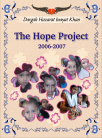
www.hopeprojectindia.org/reports.htm
- Articles o Sufism < , Articles on Pakistan & Flood Relief<
- Sufism – UNESCO Documents and Publications <
- http://aulia-e-hind.com , http://www.aulia-e-pakistan.com
- www.sufimovement.us , www.kashmirsufism.org
- www.haqq.com.au , www.sufismus.ch
- www.mevlana800.info , www.hope-project.de
- www.australiansuficentre.org , www.osmanische-herberge.de
- Meet International Year of Biodiversity 2010, friends, fans at fb <
- Meet NCCT (National Campaign For Combating Terrorism)at fb <
- Meet COP16 to the UN Framework Convention on Climate Change at fb <
- Meet Council for a Parliament of the World’s Religions (CPWR)at fb <
GPIW Summary Report, Sufi Yogi Dialogue
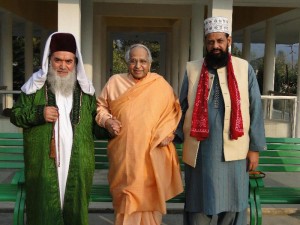
> Himalayan Yoga Tradition Rishikesh, India <
> Sufi-Yogi Dialogue Summary Report <
Sufism or taṣawwuf (Arabic: تصوّف), also spelled tasavvuf according to the Persian pronunciation, is generally understood to not be a distinct sect of Islam, but the inner, mystical dimension of Islam.A practitioner of this tradition is generally known as a ṣūfÄ� (صُوفِيّ), though some adherents of the tradition reserve this term only for those practitioners who have attained the goals of the Sufi tradition. Another name used for the Sufi seeker is Dervish. Classical Sufi scholars have defined Sufism as „a science whose objective is the reparation of the heart and turning it away from all else but God.“ Alternatively, in the words of the renowned Darqawi Sufi teacher Ahmad ibn Ajiba, „a science through which one can know how to travel into the presence of the Divine, purify one’s inner self from filth, and beautify it with a variety of praiseworthy traits. Read More: > HERE <
From January 27th to February 1st, 2010, Hindu and Muslim religious leaders from India, Pakistan and Afghanistan met to explore how they could work more closely to form a spiritual alliance to ease tensions, counter extremism, and set a new tone for the region. The Sufi-Yogi Dialogue took place in a land famous for spiritual seers and sages, Rishikesh, on the banks of the sacred Ganges River in India. Organized by the Global Peace Initiative of Women, the Dialogue was facilitated by Dena Merriam, GPIW Founder and Convener, along with Swamini Pramananda, and hosted jointly with Swami Veda Bharati of the Swami Rama Sadhaka Grama and the Association of Himalayan Yoga Meditation Societies International.
GPIW Summary Report – Sufi Yogi Dialogue
Coming to the One through the Many
From January 27th – February 1st, 2010
the Global Peace Initiative of Women brought a delegation of
Hindu and Muslim spiritual leaders from India,
Afghanistan and Pakistan to form a spiritual alliance
On the banks of the sacred river Ganga
in Rishikesh, India
During the course of the four days, leaders from the Sufi and Yogic traditions spoke in great depth about the common ground between them and expressed great interest in learning more about each other’s practices and forming a new partnership for peace. The gathering was not a typical interfaith meeting as the leaders came together to explore a much deeper engagement, to re-discover and strengthen their ancient shared spiritual roots as a means to meet the contemporary challenges of the region and begin to resolve present-day conflicts between the two great cultures of Hinduism and Islam.
The Sufis and Yogis in particular were chosen for this ground-breaking dialogue because they represent the mystical core of the Islamic and Hindu traditions respectively. As such, they are especially suited to distilling the common essence of unity, the direct experience of the Divine, at the heart of both religions – and perhaps ultimately of all religious experience. Tapping into this inner source of unity, common to all spiritual paths at their innermost level, has the potential to guide us to outer unity in our crisis-torn world. It is in this deep meeting at the essential core of our Being that we can best experience our true identity with the Divine, which can then serve as a fulcrum for global healing and harmony.
The Hindu leaders represented Yogic, Vedantic and Kashmiri Shaivite traditions from different parts of India, while the Sufi leaders represented orders in Pakistan and Afghanistan, as well as Kashmir in India.
Meet Kashmir Sufism Society, friends and Studies at fb <
Meet Support Internal Displaced Kashmirian Indigenous at fb<
SAVE A SMILE & DIE Kashmir Shivaiten im Himalaya Gebirge <
SUFI POETRY – The appeal of Sufi poetry is universal, great Sufi Poets such as Rumi, Hafiz and Omar Khayyam are appreciated by both Sufi’s and non Sufi’s alike. This is because their poetry expresses the universal aspirations of spiritual seekers .
More interesting Articles, Contacts about Islam, Medicine, Sufi Arts and Culture:
(mehr …)
Sufi Poetry and the Kashmir Sufi Society

> Dr. A. P. J. Abdul Kalam & Khwaja Farooq Renzu Shah <
> Kashmir: Sufis, Saints and Shrines <
> Kashmiri Overseas Association, Inc. <
Kashmir Sufism-History and Background
Kashmir-The Valley of Divinity – In the heart of the great Himalayas is a beautiful valley, which has been described by poets and emperors as paradise. Over the centuries, the verdant vale of Kashmir has seen the blossoming of many exquisite flowers of the philosophy of humankind. With the bountiful beauty of nature constantly around them, the people of Kashmir have always been filled by thoughts of the divinity of creation.
With the first rays of the sun, the melodious Azaan – call for the morning prayers, resonates through the mountains, a new day of life ushers into hope and joy with fresh fragrance of the Himalayan blooms and lotuses, of fir and pine trees. The purity of the mesmerizing beauty of Kashmir transforms any seeking soul into a humble being. The enchanting natural beauty of the valley with lakes and waterfalls, mountains and dales, rivers and springs, birds and butterflies and the peace loving folks all together in harmony magnify the Oneness of Allah in totality. The mystic atmosphere of Kashmir made this a suitable place for Rishis, Saints and Sages for time immemorial.
The philosophers of the valley have had a joyous belief in the manifestation of the beauty of God, in the world that we see around us. It is a deep belief that every aspect of creation is a part of the supreme consciousness. This philosophy of love and the recognition of divine beauty were the essence of the Buddhist and Hindu philosophies of the early period in Kashmir. Islam in the valley inherited these traditions and Kashmiris developed a rich Sufi culture, which continued the tradition of a deep personal love of God.
In Kashmir, visions of the lord’s glory are constantly in front of us. Kashmir Valley is an ideal refuge for a contemplative mind that gives you space to cultivate virtues towards leading a meaningful and content life. Long walks into the forests and boat cruising in the backwaters of Dal Lake during the day and quite evenings observing the stars awakens ones senses to understand the mystery of the universe .
Khwaja Farooq Renzu Shah has written eleven books and his Sufi Mankabat on Bulbul Shah has received national and international awards. Nusrat Fatheh Ali Khan and his disciple Rufi Fateh Ali have achieved fame through Bul bul Shah Mankabat on Sufism. His association with Sufi shrines of Kashmir , particularly shrine of Sheikh-ul-Alam at Chrar Sharief Budgam district, Sufi shrine of Muqam, Waterhail Budgam, Khansahib Budgam, Makhdoom Sahib Srinagar, Rahbab sahib, Drayigam shrine, Naqashband Sahib Srinagar, BulBul Shah Sahib Nawakadal Srinagar, Khankah Moula KhanKah, Fateh kadal Srinagar are very strong . After the tragic burning of Chrar Sharief shrine including Khankah Faiz, Khawaja Farooq had honour to rebuild Khankah Faiz. His Sufi seminars are attended by thousands of shrine believers. He organized international conference of Sheikh-Ul-Alam, Bul Bul Shah and Amir-I-Kabir. Khwaja Farooq Renzu was awarded Col.Qadafi award at Tripoli for his distinguished contribution on Sufism in 1988. He was awarded by the President of India, Prime minister, Governor and chief minister of J&K for his contribution to Sufism.
Kashmir: Where Sufis are Rishis and Rishis are Sufis!
By Sultan Shaheen
The most dominant influence on the Kashmiri Muslims, in terms of their Kashmiriyat, is that of the Rishi order of Sufis. While the Sufi orders like the Suharwardi, Kubravi, Naqshbandi and Quadri, arrived in Kashmir from Persia, Central Asia, and Central and North India, the Rishi order evolved in the valley itself indigenously in the beginning of the fifteenth century. The Kashmir valley was already permeated with the traditions of Hindu ascetism and Buddhist renunciation.
The term >„RISHI“< itself is clearly a derivation from Sanskrit and Indian traditions, though some Medieval Muslim scholars have tried to show that it is derived from the Persian word raish or rish meaning the feathers or wings of a bird. Baba Dawood Mishkati, for instance, gives a rather tortuous explanation. A bird whose feathers have been removed has no control over its own movements and depends entirely on the wind. And this is also the case with a Rishi; he is alienated from the world and lives alone, buffeted by fate. This and similar explanations, have, however, failed to impress the average Kashmiri Muslim and he, by and large, accepts its Sanskrit derivation and uses it loosely like his Hindus brethren as synonymous for a sage. In fact many Kashmiris do not even associate the word with any particular order of sufis, but use the word to denote any and every sufi saint.
The indigenous Rishi order of Sufis, however, does differ not only from the establishmentarian and fundamentalist Muslims but also from other Sufi orders in its philosophy and way of life. Many writers who have chronicled the life and times of Kashmiris of this period have been attracted to the unique way of life and philosophy of the Rishi order of Sufis. An important chronicler of this period, Abul Fazl, for instance, is all praise for them. He writes: „The most respected class of people in this country (Kashmir) are the Rishis. Although they have not abandoned the traditional and customary forms of worship (taqlid), but they are true in their worship. They do not denounce men belonging to different faiths. They do not have the tongue of desire, and do not seek to obtain worldly objects. They plant fruit-bearing trees in order that people may obtain benefit from these. They abstain from meat and do not marry.“
This account is corroborated by Emperor Jahangir. He writes: „Although they have not acquired learning and marifa, they live a frank and unostentatious life. They criticise nobody and ask for nothing from anyone. They neither eat meat nor marry. They always plant fruit-bearing trees in uninhabited parts, so that people may be benefited by them. But they themselves do not hope to reap any advantages from these trees.“
The Kashmiri Muslim Rishi’s ascetic and unworldly life thus bears a close resemblance to the lifestyle of the Hindu Rishis and Munis as well as Buddhist and Jain monks.
Baba Dawood Khaki describes a Rishi as one who is an ascetic and leads a disciplined life different from those of other saints. He is free from all worldly pleasures. Baba Nasib calls them gracious to the pious and describes them as men of pure heart. Their presence has turned Kashmir into heaven, he says. Cutting themselves away from all worldly relationships, they neither marry nor bother themselves with a family life. Piety is their apparel(khirqa); their nights are devoted to worship and during the day they worship incessantly. Having abandoned all worldly desires, they have succeeded in controlling their carnal lusts. Read Full Article: > HERE <
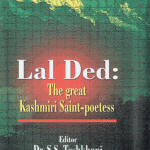
Lal Ded: The Great Kashmiri Saint-Poetess
Edited by: Dr. S. S. Toshkhani
Streifzug durch die Welt der indischen Mystiker und Dichterheiligen
– ihre Gedichte u. Gesänge –
This book represents the proceedings of a National Seminar on „Remembering Lal Ded in Modern Times“ conducted by Kashmir Education, Culture and Science Society in New Delhi on 12 November, 2000. Lalleshwari or Lal Ded, according to late Prof. Jayalal Kaul, has been the greatest genius of Kashmir of all times. This book has many eminent writers of modern period who have recollected the genius of Lal Ded for the modern world. Lal Ded was living in the 14th century in Kashmir. In spite of long interval of history, Lal Ded is remembered in every home even in modern period. Her Vaaks, or sayings, represent the best teachings for human kind today to seek unity and harmony between people of all religion and races. Her poetry is all inspiring. Her philosophy of life represents the highest science of life. She can be the leader to combine science and humanism world over, and once again establish a peaceful and melodious world of joy and happiness. Kashmiris in general and Indians and the people of the world are inspired by Lalleshwari’s teachings. This book and the seminar by KECSS cannot possibly touch all aspects of life and times of Lal Ded. However, a laudable attempt is made to recall Lal Ded for creating a joyful and harmonious world in Kashmir and the rest of India and the world. Hindus, Muslims and people of all faith remember Lal Ded with great reverence. This book should be of world-wide interest.
About Kashmir Sufism Society: Khwaja Farooq Renzu Shah believes in “Love as Revolution” which can engulf our power on all forms of terror, hate, communalism and regionalism. He is making efforts to restore the highest position of Sufism in Kashmir and make the world aware of its importance. He has practiced so far one lakh times Darood Khawani and attended Sufism Mehfils throughout the state. Read More: > Here <
- Founder Chairman of Kashmir Sufism Society
- Distinguished personality of Kashmir
- Founder of Kashmir Sufism society – Direct decedent of 1st Muslim king of Kashmir Renzu shah who was also known as Rinchen Shah (Foundation of Sufism under direct patronage of Hazrat Sharaf-u-din Bul bul Shah was laid by him in 1318 AD.)
- Meet Kashmir Sufism Society, friends and Studies at fb <
- Meet Support Internal Displaced Kashmirian Indigenous Peoples at fb<
- SAVE A SMILE & DIE Kashmir Shivaiten im Himalaya Gebirge <
#EU decries attack on IDP camp,but turns a blind eye to #Turkey border closure
UPDATE: @MSF is now in partnership with @SOSMedFrance on the #Aquarius. Our team of 8 will provide care on board. pic.twitter.com/8H6kkchx0i
— MSF Sea (@MSF_Sea) 3. Mai 2016
They are Free!
Wonderful news: Antonio Pampliega, Jose Manuel Lopez & Angel Sastre are safe.https://t.co/978S4MLwEZ pic.twitter.com/uFQNdTEM0i— Lotte Leicht (@LotteLeicht1) 8. Mai 2016
صباح النجاح والفلاح.. اللهم وفق أبناءنا وبناتنا في امتحاناتهم وسهل عليهم وألهمهم الصواب.
— سلمان العودة (@salman_alodah) 8. Mai 2016
Three Spanish journalists who were kidnapped in #Syria last year have been released and are due to return to #Spain. https://t.co/kULeXgUlFv
— Lotte Leicht (@LotteLeicht1) 8. Mai 2016
Having tried to pocket millions, Malaysia PM wants to dump debts of corrupt fund on gov’t. https://t.co/AkA1LyFhOC pic.twitter.com/MAiYELCBC2
— Kenneth Roth (@KenRoth) 7. Mai 2016
Big news/upcoming for $$ secrecy: US efforts to identify beneficial owners, new @ICIJorg #PanamaPapers release, UK Anti-Corruption Summit!
— Global Fin Integrity (@GFI_Tweets) 7. Mai 2016
Protecting National Interests Under the Guise of Human Rights & Democracy https://t.co/c4sgcdMx1g
— Toby Cadman (@tobycadman) 7. Mai 2016

Proud of my daughters today marching with daddy with #medicsunderfire pic.twitter.com/fwbFx0Piyd
— Toby Cadman (@tobycadman) 7. Mai 2016
Censorship and freedom of expression – Mana Neyestani (Iran) https://t.co/DpqADF2sL1 @CartooningPeace pic.twitter.com/4es3vq2Y5T
— Lotte Leicht (@LotteLeicht1) 7. Mai 2016
Deeply honoured to take this oath. I will be a Mayor for all Londoners. pic.twitter.com/u1GXBkRvDZ
— Sadiq Khan MP (@SadiqKhan) 7. Mai 2016
Statement from the Tom Lantos Human Rights Commission
6th May 2016Tom Lantos HRC Co-Chairs Urge Stay of… https://t.co/XZbONrTQYV
— Toby Cadman (@tobycadman) 7. Mai 2016
Tom Lantos HRC Co-Chairs Urge Stay of Execution in #Bangladesh Case for Lack of Due Process #Nizami… https://t.co/Ad8kWefUZo
— Toby Cadman (@tobycadman) 7. Mai 2016
Das Dossier von @DIEZEIT ist wieder mal genial! Die bezaubernde Geschichte dieses Trailers https://t.co/YzqJEZGnrf pic.twitter.com/1Sq52Ab08q
— Yilmaz Gülüm (@YilmazGulum) 7. Mai 2016
Cartoonists take up their pens to defend press freedom https://t.co/GV0sa7Adei @CartooningPeace pic.twitter.com/nnE5mRL4B3
— Lotte Leicht (@LotteLeicht1) 7. Mai 2016
#Indian zero-rupee note carries the slogan, „Eliminate corruption at all levels“. https://t.co/Kstr3jZVMc #goodgov pic.twitter.com/BdfOGR61oI
— World Bank (@WorldBank) 7. Mai 2016
Taliban Publicly Execute Two Women in Northern Afghanistan https://t.co/yiMmYkNYMH
— Golnaz Esfandiari (@GEsfandiari) 7. Mai 2016
RIP. Rights activist Khurram Zaki who stood up against radical cleric of Lal Masjid, gunned down in Karachi. https://t.co/ibxdaXLzaQ
— farahnaz ispahani (@fispahani) 7. Mai 2016
#Iran sends its young people and Afghans to die for a dictator who is responsible for the death of tens of thousands of Syrians.
— Golnaz Esfandiari (@GEsfandiari) 7. Mai 2016
Enough is enough. We need an economy that does not allow the top 1 percent to earn 58 percent of all of the new income in America today.
— Bernie Sanders (@SenSanders) 7. Mai 2016

This is what extraordinary societies look like. @SadiqKhan, new London mayor, in a picture possible in few places. pic.twitter.com/X09vu7m1xt
— Anand Giridharadas (@AnandWrites) 7. Mai 2016
Sufi Spiritual Leader Killed in Yet Another Hacking Attack in Bangladesh https://t.co/dQH8R4447V
— Golnaz Esfandiari (@GEsfandiari) 7. Mai 2016
Al Qaeda Is About to Establish an Emirate in Northern Syria https://t.co/rtI2qTOk7s
— ahmed shaheed (@ahmedshaheed) 7. Mai 2016
#Thailand: New low for junta’s crackdown on critics – activist’s mother charged under ‘insulting the monarchy’ law https://t.co/AbixOarYJs
— Lotte Leicht (@LotteLeicht1) 7. Mai 2016
#Refugee dubbed #Syria’s #Malala Is Waging A Campaign Against #ChildMarriage In #Zaatari Camp https://t.co/HLJ3Y1Pjsq
— Friends of UNAOC (@friendsunaoc) 7. Mai 2016

„There has never been a more crucial time to stand with refugees“ -Cate Blanchett, new @refugees Goodwill Ambassador https://t.co/d9JuIEYDwI
— UN Vienna (@UN_Vienna) 7. Mai 2016

#medicsunderfire #NotATarget
Join us in Trafalgar Square now!
Toby Cadman, Human Rights Lawyer pic.twitter.com/MdXaiLTufV— Ayman Jundi (@asjundi) 7. Mai 2016
Toby Cadman – „enough is enough“ on hospital bombing
— Medics Under Fire (@MedicsUnderFire) 7. Mai 2016
Another example of increasing oppression in Turkey. https://t.co/hVtzIZqAdk
— Tony Fisher (@tonyfisherfjg) 7. Mai 2016
#NetizenReport: LGBT News Site Editor is Latest Victim of Attacks on Bangladeshi Intellectuals https://t.co/SA8L3isvoR
— Advox (@Advox) 7. Mai 2016
#medicsunderfire pic.twitter.com/9kRVdb8iVy
— Toby Cadman (@tobycadman) 7. Mai 2016
#medicsunderfire very proud to attend a great event at Trafalgar Square @MedicsUnderFire pic.twitter.com/uvBoW16ehQ
— Toby Cadman (@tobycadman) 7. Mai 2016
#EU decries attack on IDP camp,but turns a blind eye to #Turkey border closure leaving #refugees stuck inside #Syria https://t.co/SPxAh9B2F5
— Lotte Leicht (@LotteLeicht1) 7. Mai 2016

Refugees in Greece: „We are dying here, just like we were in Syria, but slower.“ https://t.co/u1Zqq1BaXt pic.twitter.com/qxDCpwJsoB
— Doctors w/o Borders (@MSF_USA) 6. Mai 2016
Self-determination?
„Dhikr is the knowledge of being with Allah and being in the presence of Allah.“
Shaykh Sayyid Muhammed Efendi Baba (k.s)
„Do not become the candle that gives light to others but itself remains in darkness.“
Shaykh Abdul Qadir Jilani
www.Qadiriyya.com (English)
www.sufi-media.de (Deutsch)
www.ukav.de (Türkce)

Self-determination? „Catalonia lawmakers approve resolution for secession process from Spain“ http://on.wsj.com/1MRMZUj via @WSJ
Do All Roads Lead to Rome? Why Ukraine Resorts to Declarations Rather than Ratification of the Rome Statute http://opiniojuris.org/2015/10
ICYMI:my forthcoming essay on Carl Schmitt & today’s intl law scholars. http://bit.ly/1WJwIpg @opiniojuris @davidrieff @nyulaw @ejiltalk
Amnesty trying to protect war criminals in Bangladesh: Hasina
Bangladesh PM accuses @AmnestyUK of taking a bribe to call for justice. Bordering on the ridiculous
https://twitter.com/jantakareporter/status/663747982454460416
Mamata Banerjee @MamataOfficial
Shubh Deepavali
Happy Diwali
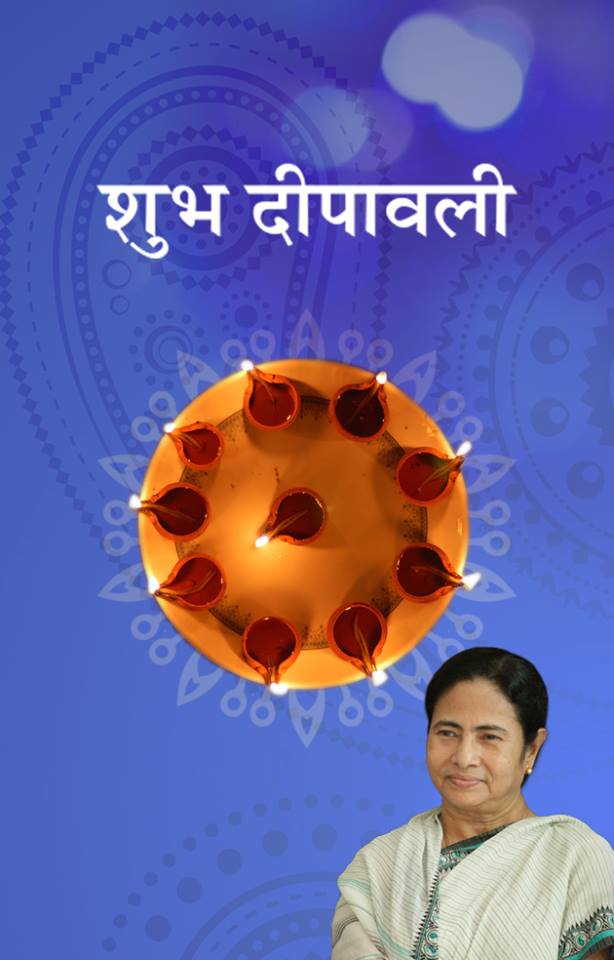
দীপাবলি হোক আলোর উত্সব। সকলকে জানাই আন্তরিক শুভেচ্ছা
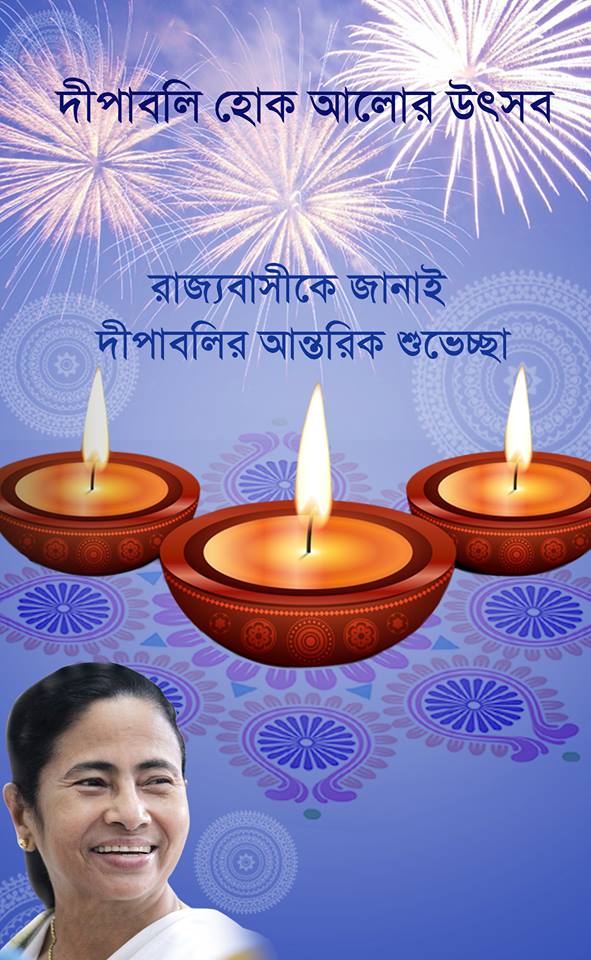
Deutschland genehmigt neue Waffenexporte. So wird ein Grundstein f. Flüchtlingskrisen gelegt.
http://derstandard.at/2000025383253/Deutschland-genehmigt-neue-Waffenexporte?ref=article … via @politikstandard

The cost of war. A commentary by @WHOEMRO Regional Director http://goo.gl/j8epoI #Syria pic.twitter.com/HAqRHAUQhz
RT @cityofhopeLinz Könnt Ihr hier nicht proaktiv unterstützen @KlausSchwertner ? pic.twitter.com/DuPfq1DjZM

#SaudiArabia: 151 executions so far in 2015, 68% increase over all of 2014. #DeathPenalty http://amn.st/6016BuJMq
„The universe is a complete unique entity. Everything and everyone is bound together with some invisible strings.
Do not break anyone’s heart. Do not look down on weaker than you. One’s sorrow at the other side of the world can make the entire world suffer, one’s happiness can make the entire world smile.“
Shams Tabrizi

„Do not become the candle that gives light to others but itself remains in darkness.“
Shaykh Abdul Qadir Jilani

ACLU & @HRW urge US Attorney Gen to order criminal investigation into #torture & other #CIA crimes
A nice footage from the holy shrine of #ImamReza (pbuh) Here I am to seek shelter from you https://www.youtube.com/watch?v=4Vqi8W3L0g8&list=PLP9XKFcmDYv4hmgwVEXplXrfnVeZQk-St …
During first months of arriving to Medina, one of the works done by #ProphetMuhammad was to make #brotherhood contracts among Muslims.
Zudem ist am kommenden Dienstag auch der Todestag des achten schiitischen Imam Reza. Viele Reiseagenturen hatten die Feiertage genutzt, um Yalda-Nacht-Reisetouren anzubieten.
كتابي(أسئلة العنف) يعالج عنف الجماعات والمجتمعات والأفراد والدول وسأختار مقالات منه لنشرها قريبا،وهو يطبع لمعرض الكتاب في القاهرة بإذن الله.
فرغت اليوم بفضل الله من كتابي الجديد (أسئلة العنف) فيما يزيد على ٣٠٠ صفحة أرجو له القبول عند الله والصالحين من عباده.
Fas KralÄ� 5 uçakla Türkiye’ye geldi!… http://karsigazete.com/gundem/fas-krali-5-ucakla-turkiyeye-geldi-h20510.html …
NY lawmakers urge congressional delegation to support Turkey’s press freedom http://www.todayszaman.com/latest-news_ny-lawmakers-urge-congressional-delegation-to-support-turkeys-press-freedom_367729.html …
Thousands stage anti-Islam protest in Germany http://www.todayszaman.com/world_thousands-stage-anti-islam-protest-in-germany_367730.html …
[VIDEO] We will not be silenced: The story of 6 days at #Zaman http://www.todayszaman.com/national_video-we-will-not-be-silenced-the-story-of-6-days-at-zaman_367727.html …
Brussels insists on its concerns despite ErdoÄ�an’s EU bashing http://www.todayszaman.com/diplomacy_brussels-insists-on-its-concerns-despite-erdogans-eu-bashing_367728.html …
PKK’s BayÄ�k: ISIL using Süleyman Şah’s tomb as headquarters http://www.todayszaman.com/diplomacy_pkks-bayik-isil-using-suleyman-sahs-tomb-as-headquarters_367664.html …
Ustalarimiz tam gaz calisiyorlar…
Rezerve gruplarimiz gelmeye devam ediyor.

Radio Prague – Czech government under public pressure to accept Syrian refugees http://www.radio.cz/en/section/curraffrs/czech-government-under-public-pressure-to-accept-syrian-refugees … via @RadioPrague
Die asylkoordination und RechtsberaterInnen und AnwältInnen machen auf das anhaltende Chaos im BFA aufmerksam.
Compassion should be unbiased, based on a recognition that others have a right to happiness, just as you do.
His Holiness the Dalai Lama Arrives at Ganden Jangtse Monastery http://goo.gl/fb/36sdeC

Girl dies after self-immolation protest at Ngaba http://goo.gl/fb/rOj5Eh
Girl dies after self-immolation protest at Ngaba http://goo.gl/fb/amLLVP
उपनिवेशवादीहरु कहिल्यै आदिवासी हुन सक्दैनन् । #Nepal #indigenouspeoples #identity Dinesh Ghale http://fb.me/6UYcHxm40
प्रसारणलाइन बनाउदैं माथिल्लो मर्स्यांदी ‚ए‘ No transmission line in #Lamjung without free, prior and informed… http://fb.me/1TVZhi2Bj
News Lens: World Bank makes killing indigenous peoples more profitable http://bit.ly/1z7Fj8M
Rafique’s 17-year-old son is being held captive in a Thai camp after fleeing #Burma http://owl.li/GiZgS #Rohingya
CCHR joins Southeast Asian Press Alliance @seapabkk, meets in #Thailand to strengthen regional freedom of expression http://bit.ly/1yAvqjw
Today, Sanjiv Ji, Harsh Ji and Utsav Ji of Atlético de Kolkata came to the State Government Secretariat at “Nabanna” with the ISL cup. I congratulate all the 8 participating teams and all the organizers, especially Nita Ji, for making ISL an event of such huge popularity among football lovers and reaching it down to the grassroot level.
To dedicate the cup to the people, our Government and Kolkata Municipal Corporation will felicitate all the ISL participants on 24th December at Netaji Indoor Stadium at 1 PM. I am inviting all of you to join.
Once again, congratulations and best wishes to all the ISL participants.
সব খেলার সেরা বাংলার এই ফুটবল I

Merry X-mas. According to Poroshenko trilateral #minsk talks to take place on Dec 24 and 26. #Ukraine #Russia
Another peak of mutually exclusive stories and statements of apparent witnesses to the tragedy of #MH17 can be seen on my current TL.
What do the 12 Days of Christmas Signify in the Christmas Carol? http://ow.ly/GdkCt @dkmatai
BBC World Service fears losing information war as Russia Today ramps up pressure http://gu.com/p/43j7h/stw
Here is link to full transcript of @Najmeh_Tehran’s rare, exclusive interview w top #Iran official Ali Shamkhani http://on.ft.com/1sPR6RY
My prognosis on #geopolitical bipolarity In May https://mobile.twitter.com/vtchakarova/status/468318318886395904 … In Oct https://twitter.com/vtchakarova/status/525244611707813888 … Confirmation http://carnegie.ru/eurasiaoutlook/?fa=57045 …

Medien- und Meinungsfreiheit für Ungarn
Prosecution asks for suspension of US diplomat Goodfriend’s immunity after tax chief sues for defamation. http://www.politics.hu/20141222/prosecution-asks-for-suspension-of-goodfriends-immunity-over-defamation-case/
So kannst du Musik von einer CD auf dein iPhone laden Am Apfelschule-Wochenende hat Giuseppe Porcu in einem… http://fb.me/1DSufIZV7
Have a look at some of the most striking images of 2014 @UNGeneva: http://is.gd/5haXS3
End-of-year Press Conference by the #UN Secretary-General, New York, today, 18:00 (Vienna time) – follow live: http://webtv.un.org/
#TortureReport: @ACLU & @HRW urge US Attorney Gen to order criminal investigation into #torture & other #CIA crimes. http://www.hrw.org/news/2014/12/22/letter-attorney-general-holder-requesting-appointment-special-prosecutor-torture …
NY Times calls for prosecutions: „No amount of legal pretzel logic can justify behavior“ detailed in #TortureReport. http://www.nytimes.com/2014/12/22/opinion/prosecute-torturers-and-their-bosses.html?smid=tw-share&_r=0 …
I’ll be on @democracynow tomorrow talking about @P4HR report „Doing Harm“ and @CIA torture program’s use of doctors and psychologists.
Text of @ACLU & @HRW letter to Attorney General seeking appointment of special prosecutor to investigate CIA torture https://www.aclu.org/sites/default/files/assets/aclu_and_hrw_letter_torture_special_prosecutor_-_12-22.pdf …
#TortureReport: @ACLU & @HRW urge US Attorney Gen to order criminal investigation into #torture & other #CIA crimes.“ http://sfy.co/qugB
MAKERS OF BENGALI LITERATURE : RAMPRASAD SEN
MAKERS OF BENGALI LITERATURE : RAMPRASAD SEN
ACADEMIC PAPER
“O my heart, you know not cultivation.
This human soil is lying fallow
and it would have produced gold if cultivated”
The Indian concept of culture (Kristi, samaskriti) is defined in the above three lines. “The sharpening of human sensitivities, feelings, emotions, and sensibilities through art is one of various ways by which man can ‘cultivate’ the soil of life to make it yield golden harvest in return”. Thus the poet Ramprasad Sen wrote about the main concept of Indian Culture as stated by Niharranjan Roy.
“No flattery could touch a nature so unapproachable in its simplicity. For in these writings we have perhaps alone in literature, the spectacle of a great poet, whose genius is spent in realizing the emotions of a child.Willam Blake, in our own poetry, strikes the note that is nearest his, and Blake is by no means his peer.
“Robert Burns in his splendid indifference to rank, and Whitman in his glorification of common things, have points of kinship with him. But to such radiant white heart of child-likeness, it would be impossible to find a perfect counterpart.”
– Sister Nivedita (Margaret Noble:1867-1911) on Ramprasad Sen
en.wikipedia.org/wiki/Sister_Nivedita
belurmath.org/kids_section/24-visit-to-niveditas-school
cwsv.belurmath.org/volume_5/questions_and_answers/in_answer_to_nivedita.htm
Ramprasad created a new form of poetry known as ‘Sakta Padabali’ in Bengali, and a new style of singing called ‘Prasadi’. After Ramprasad there was a remarkable outburst of Sakta poetry in Bengal.
His view of life was liberal. He was against racism, castism and untouchability, and generally opposed the Hindu orthodoxies of the conservative society.
Ramprasad believed that there should not be any religious conflict between various sects and cults, since God is one. He wrote, “One in five, five in one mind, should not go into conflicts.” ( ore eke panc, pance ea, non korna sweshasweshi)
Just as the message of Chatanyadeva was spread through his kirtan-singing and dance in the fifteenth century, Ramprasad’s message spread through his songs in the eighteenth century.
The Family
Ramprasad was born in a Baidya (caste of Ayurvedic doctors) familyof West Bengal. Ramprasad’s ancestor Raja Seiharsha Sen, the court physician of Sultan Fakurddin in the fourteenth century, had received the title of Raja from the Sultan.
The family tree:
Sriharsha – Bimal – binayak-Rosh – Narayan – Sangu or Sang – Sarani – Krittibas – Ratnakar – Nityananda – Jaggannath – Jadunandan – Ranjan – Rajiblochon – Jayakrishna – Rameswar – Ramram – Ramprasad.
Ramprasad made reference to his forefathers, especially Krittibas Sen and his father Ramram Sen. The family initially was staying in Dhalahandi in the district of Birbhum, then shifted to Kumarhatta-Halisahar (then in the district of Nadia). His father was a Sanskrit scholar, an Ayurvedician and a poet.
“Tadangaj Ramram mahakobi gunodham
Sada jara sadaya Abhaiya “
Ramprasad also mentioned the scholarly forefathers, who supported many charities.
The family lost their wealth; Ramprasad’s father did not fare well, and died early.
RAMPRASAD’S LIFE AND TIME:
5ème EDITION DU FESTIVAL DE FES DE LA CULTURE SOUFIE Sous le thème « Figures féminines du Soufisme »
http://www.festivalculturesoufie.com
As we have more and more spontaneous demands in the national and international fields, to take part into the program of the festival, it becomes obvious that this event is bound to become a real platform of artists’ encounters who will let the world discover the cultural diversity of Sufism and the richness of the Islamic Culture. Indeed, Morocco which has always been a land instilled by Sufi spirit, will reinforce its role in the dialogue between different cultures and will be able to show to the rest of the world, a tolerant Islam, opened to other cultures and religions. Its role of mediation in its history, and even more recently, will help this country to become a real bridge between Orient and Occident.
Aims of the Festival
- To allow Morroccan people to discover or re-discover how the Sufi brotherhoods have mainly succeeded in preserving a message of universal spirituality that irrigated the whole of the Muslim culture and nourished its artistic, literary, and even social and economic forms of expression especially in Morocco.
- To allow people from other cultures to discover another face of Islam thanks to the message of opening and peace inherent to Sufism, far from the image generally spread by the media. To show how Sufism, as a school of spiritual and civic education, can be a mean of human development and a peace mediator.

- Through this event, to reinforce the position of Morocco as a link between Orient and Occident in the intercultural dialogue.
- To show the richness and the creativity of the spiritual, academic, artistic and social dimensions inspired by Sufism. To let people know contemporary artists and thinkers, national and international, and with them, to find new ways of social, cultural and artistic expressions that can strengthen the intercultural dialogue and help to the development of the society.
- To question the role of spirituality nowadays, the connection between spirituality and business, environmentalism and social actions. How the spirituality may, under the present frames of the social and entrepreneurial activity, become a particularly prolific contributor to the human development, in its social, cultural and spiritual contexts.
History of Sufism
Sufism is a mystic and ascetic movement which originated in the Golden Age of Islam, from about the 9th to 10th centuries.
The emergence of Sufism is a consequence of the wide geographical spread of Islam after the Rashidun conquests, and the resulting absorption of a wide range of mystic traditions from outside Arabia, especially Greater Persia. Sufism became a more formalized movement by the 12th century, and was a very successful movement throughout the Muslim world during the 13th to 16th centuries. There also were numerous Sufi orders active in the modern period, especially in non-Arab parts of the Muslim world.
1 Early history
2 13th to 16th centuries
2.1 Spread to India
2.2 Muslim Spain
3 Modern history
http://whc.unesco.org/en/statesparties/ma
http://www.hrw.org/middle-eastn-africa/morocco/western-sahara
http://www.ohchr.org/EN/Issues/FreedomReligion/Pages/FreedomReligionIndex.aspx
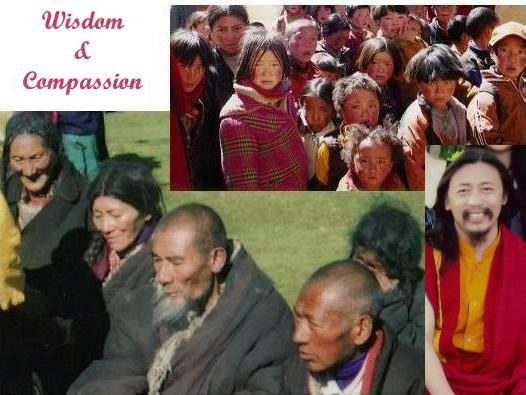
Freedom of Religion & Belief – China: Tibetan Monasteries Placed Under Direct Rule
Tibetan Yoga Center – Yoga Retreats
Contact: tibetanyogainfo@gmail.com
www.bhutanzopa.com.bt/AdventureTravel
The practice of Yoga is intimately connected to the religious beliefs and practices of both Buddhism and Hinduism. However there are distinct variations in the usage of yoga terminology in the two religions. In Hinduism, the term „Yoga“ commonly refers to the eight limbs of yoga as defined in the Yoga Sutras of Patanjali, written some time after 100 BCE, and means „yoke“, with the idea that one’s individual atman, or soul, would yoke or bind with the monistic entity which underlies everything (brahman). In the Vajrayana Buddhism of Tibet, however, the term „Yoga“ is simply used to refer to any type of spiritual practice; from the various types of tantra (like Kriyayoga or Charyayoga) to ‚Deity yoga‘ and ‚guru yoga‘. In the early translation phase of the Sutrayana and Tantrayana from India, China and other regions to Tibet, along with the practice lineages of sadhana, codified in the Nyingmapa canon, the most subtle ‚conveyance‘ (Sanskrit: yana) is Adi Yoga (Sanskrit). A contemporary scholar with a focus on Tibetan Buddhism, Robert Thurman writes that Patanjali was influenced by the success of the Buddhist monastic system to formulate his own matrix for the version of thought he considered orthodox. Read More: HERE
Early Buddhism incorporated meditative absorption states. The most ancient sustained expression of yogic ideas is found in the early sermons of the Buddha. One key innovative teaching of the Buddha was that meditative absorption must be combined with liberating cognition. The difference between the Buddha’s teaching and the yoga presented in early Brahminic texts is striking. Meditative states alone are not an end, for according to the Buddha, even the highest meditative state is not liberating. Instead of attaining a complete cessation of thought, some sort of mental activity must take place: a liberating cognition, based on the practice of mindful awareness. The Buddha also departed from earlier yogic thought in discarding the early Brahminic notion of liberation at death. Liberation for the Brahminic yogin was thought to be the realization at death of a nondual meditative state anticipated in life. In fact, old Brahminic metaphors for the liberation at death of the yogic adept were given a new meaning by the Buddha; their point of reference became the sage who is liberated in life. Read More: HERE
Dream Yoga or Milam (T:rmi-lam or nyilam; S:svapnadarśana)— the Yoga of the Dream State are a suite of advanced tantric sadhana of the entwined Mantrayana lineages of Dzogchen (Nyingmapa, Ngagpa, Mahasiddha, Kagyu and Bönpo). Dream Yoga are tantric processes and techniques within the trance Bardos of Dream and Sleep (Tibetan: mi-lam bardo) and are advanced practices of Yoga Nidra. Aspects of Dream Yoga sadhana are subsumed within the practice suite of the Six Yogas of Naropa. Read More: > HERE <
Tibetan yoga center was established to provide a program of study and practice in the Tibetan Buddhist (Vajrayana) tradition that would integrate the essence of these teachings and present them in a suitable way for practitioners in the West. The program combines the core practices relying on visualizations, yoga of channels, winds and drops, and insight into the nature of the mind (rigpa) for efficient progress on the path. The core teachings of Tibetan Yoga Center are ‚The yogas of the six bardos‘ of the Nyingma lineage of Tibetan Buddhism, summarized in the curriculum as seven courses (see the program section). The founder and master teacher of the center, Khenchen Lama Rinpoche, was at numerous occasions encouraged by his teachers to focus on helping Western students, particularly through these practices. To help bring these teachings closer to the background of Western practitioners, the program of the Tibetan Yoga Center also integrates elements of Western neuroscientific research on changes in behavior, mind and brain as a result of meditation. Building on the tradition of enlightened householder yogis in Tibet, the program of the center was developed for yogis of the current era – serious practitioners leading busy lives with work and family commitments who want to bring their spiritual practice to swift fruition to fully benefit sentient beings.
Tibetan Yoga Center operates on principles of a social business, offering teachings mostly by suggested donation and for minimal possible fees to cover expenses. The aim of the Tibetan yoga of mind is to develop universal loving kindness and compassion coupled with the ultimate wisdom of the nature of phenomena, the ultimate truth. At the basic level of achievement, one wishes happiness for oneself as well as other people.
At the medium level of achievement one realizes that the source of ultimate happiness is the understanding of the true nature of phenomena. One realizes that the most profound way to benefit sentient beings is to achieve enlightenment and works very hard towards this goal. On this path, one completely purifies his/her mental afflictions – anger, attachment, ignorance, jealousy and pride. The highest level of achievement in the Tibetan yoga of mind is the experiential understanding of our own Buddha nature – the deepest level of the mind. When one continuously sustains this realization in his/her mind stream, s/he becomes the embodiment of the union of primordial wisdom and compassion, and benefits sentient beings in limitless ways. This achievement is the essence of the Tibetan yoga and the deepest meaning of the term ’naljor‘.
TYPES OF YOGA IN TIBETAN BUDDHISM – There are six yanas (modes of spiritual practice) in Vajrayana: 1. Kriyayana, 2. Upayana, 3. Yogayana, 4. Mahayoga, 5. Anuyoga, and 6. Atiyoga. In Nyingma lineage, the main focus of practice is on Mahayoga, Anuyoga and Atiyoga.
Teaching and Practice Downloads: This section contains general teachings given by teachers of the Tibetan Yoga Center at various occasions as well as specific teachings that are part of the curriculum of the center. These teachings are available for free, but proper reference to the teachings if used as part of other materials should be included.
Previous some related #articles #videos:
Mountain Minorities and Indigenous Peoples
Yoga of Himalayas – Nuns & Communities
The Ninth Mandaean Camp Niagara Falls
UNESCO – The Tradition of Vedic Chanting
UN – Nagoya biopiracy agreement ‚is unexpected success‘
Saving the Bedouin Heritage and Biodiversity
A Call for Renewable Energy in Brazil – Belo Monte
Indigenous Australien Medicine – Bush Medicine
Build Hope – Sivananda Sevashram
ARGAN TREE – Argan Oil Morocco
Jain Tradition – Mahavir Jayanti India
Monasteries Environmental Himalayaprotection
Monks lead march to save Himalayas
Interfaith Center: Gala Dinner with Yusuf Islam
Gilgit (UNESCO Gilgit Manuscripts) Baltistan – National Conference Sufism
Bahá’í – Religion für eine neue Zeit
Introduction – Swami Vivekananda – Jnana Yoga
The Hindu approach to spiritual evolution leading to liberation or moksha or Self-realization is one of the four major paths or yogas:
-
the path of knowledge or Jnana yoga,
-
the path of mind control or Raja Yoga ,
-
the path of devotion of Bhakti yoga and
-
the path of action/work or Karma yoga.
#video Swami Vivekananda 1893 Speech at Parliament of Religions Part 1 of 4
Swami Vivekananda was the chief disciple of the 19th century saint Ramakrishna Paramahansa and the founder of the Ramakrishna Math and the Ramakrishna Mission. He is considered a key figure in the introduction of Indian philosophies of Vedanta and Yoga to the „Western“ world, mainly in America and Europe and is also credited with raising interfaith awareness, bringing Hinduism to the status of a major world religion during the end of the 19th century CE. Vivekananda is considered to be a major force in the revival of Hinduism in modern India.
He is perhaps best known for his inspiring speech which began: „Sisters and Brothers of America,“ through which he introduced Hinduism at the Parliament of the World’s Religions in Chicago in 1893.
The Council for a Parliament of the World’s Religions works to cultivate harmony among the world’s religious and spiritual communities to achieve a just, peaceful and sustainable world.
The first Parliament of Religions was held at the 1893 Chicago Columbian Exposition, and was the first formal meeting of the religious East and West. In 1988 the Council for a Parliament of the World’s Religions (CPWR) was founded to organize a centennial celebration of the original Parliament. Since 1993, three Parliaments have been held in Chicago, Cape Town, Barcelona and in 2009 the most recent Parliament was held in Melbourne, Australia.
Dr. Joachim Reinelt: Zur Zeit des indischen Mittelalters wanderten in weiten Teilen Indiens und Tibets tantrische Mystiker umher, die Nathas, Nathayogis oder Nathasiddhas genannt wurden. Sie praktizierten und lehrten Hatha- und Kundaliniyoga und hatten großen Einfluss auf das religiöse Leben der Menschen.
Gorakshanatha Saivism: Gorakhnath or Gorakshanatha Saivism is also known as Siddha Siddhanta and Nath tradition. It was founded by Gorakshanatha (Gorakhnath) who lived about 10th century AD. He is believed to be 3rd, 4th or 5th in a line of 12 prominent teachers of this tradition, which has followers in both Buddhism and Hinduism.
He was said to be a disciple of Matsyendranatha who was from in Nepal. Followers of this sect believe that knowledge of this tradition was received by Matsyendranath directly from Siva himself. Gorakshanatha is credited with such works as Siddha Siddhanta Paddhathi and Viveka Martanda. He composed them in Hindi. He also created 12 monastic orders across Northern India in an effort to preserve the Adinatha tradition. Other important works of this tradition are Hathayoga Pradipika, Gheranda Samhita, Siva Samhita and Jnanamrita.
History of the Nathas – The history of ancient Indian sadhu texts reveals a succession of several main groups. There were the Sadhs, Yatis, Siddhas, Nathas, Pashupatis, Sant-Mats, Dasnamis and Nagas. Apart from these, many small sadhu sects have existed and played their part in the great stream of Indian life. In early history, it would appear that some sects were interwoven with others, and some merged or developed into other sects. Some thus became extinct, and others are still with us.
Full Article: http://www.saivism.net
http://www.facebook.com/parliamentofreligions
http://en.wikipedia.org/wiki/Swami_Vivekananda
Bhutan http://en.wikipedia.org/wiki/Gross_national_happiness
UN – The Challenge of Human Rights and Cultural Diversity
UNESCO – Intangible Cultural Heritage
UN – Nagoya biopiracy agreement ‚is unexpected success‘
http://www.twnside.org.sg/title2/books/The.Road.to.an.Anti-Biopiracy.Agreement.htm
Amnesty International – What are economic, social and cultural rights?
*************************************
China: Tibetan Monasteries Placed Under Direct Rule
(New York) – The Chinese government has ended a key policy of allowing Tibetan monasteries to be run by monks who comply with government regulations and have instead introduced a system that will place almost every monastery in Tibet under the direct rule of government officials who will be permanently stationed in each religious institution, Human Rights Watch said today.
The new system now requires an unelected „Management Committee“ – also referred to as zhusi danwei/gongzuozu („monastic government work-unit“)- to be established in every monastery, with up to 30 lay officials stationed in each monastery, depending on the size of the institution, according to a February 15, 2012 article in the government-run Global Times. The new „Management Committees“ will run the monasteries and will have authority over the previous „Democratic Management Committees,“ which will now be responsible for rituals and other matters.
The freedom to leave or discontinue membership in a religion or religious group —in religious terms called „apostasy“ —is also a fundamental part of religious freedom, covered by *Article 18 of the Universal Declaration of Human Rights.[2]
Freedom of religion is a principle that supports the freedom of an individual or community, in public or private, to manifest religion or belief in teaching, practice, worship, and observance; the concept is generally recognized also to include the freedom to change religion or not to follow any religion.[1]
#video Meeting with Special Rapporteur on Freedom of Religion or Belief, Heiner Bielefeldt As always saying something on the topic of freedom of religion or belief, to say it again, the most shocking experience when dealing with case of violations of freedom of religion is the extreme manifestation and degree of hatred “ http://www.youtube.com/watch?v=81qyyKzntJw
http://www.hreoc.gov.au/human_rights/religion/index.html
http://en.wikipedia.org/wiki/Freedom_of_religion
http://www.ohchr.org/EN/Issues/FreedomReligion/Pages/FreedomReligionIndex.aspx
February 29, 2012
Australian Broadcasting Corporation – Exiled PM wants ‚fact finding‘ mission in Tibet
March 3, 2012
UN Human Rights Chief asked when she would visit Tibet
Mar 6, 2012
UN calls on China to stop forced settlement of Tibetan Nomads
8 March 2012
“Unfinished progress” – UN expert examines food systems in emerging countries reports* on China, Mexico and South Africa to the Human Rights Council. In China, local-level authorities often have allowed land-grabbing at the expense of poor rural households. And between 50 and 80 per cent of the 2.25 million nomads on the Tibetan plateau may be relocated into settlements close to rural cities, overhauling the food and farming practices of this vulnerable community as part of a programme to abandon nomadic life and modernize agriculture. ( Latest Water UN Report – World Consumption of modern agriculture on fresh water by 70% )
chinadialogue Tibetan herders are struggling to adjust to sedentary life on the edge of the city of Golmud. Xia Liwei visited one family and listened to their story. http://www.chinadialogue.net/–Who-are-these-people-now
chinadialogue As China seeks to protect a delicate corner of Qinghai, 50,000 herders have been moved off the grasslands. Ill-prepared for urban life, they face a bleak future, write Guan Guixia and Suonan Wangjie. http://www.chinadialogue.net/–Hard-times-for-eco-migrants
TIBETAN NOMADS Tibetan herder with a yak Nomadic herders are known as drokpa. They make up about 25 percent of Tibetans in Tibet. In some Tibetan counties they make up 90 percent of the population. http://factsanddetails.com/china.tibetan nomads
Niyaz featuring Azam Ali | Iran, USA
Niyaz featuring Azam Ali | Iran, USA
Elektro-akustische Sufi- Sounds
Mit: Azam ALI: Stimme, Perkussion | Ramin Loga TORKIAN: Saz, Gitarre | Kiya TABASSIAN: Setar | Ziya TABASSIAN: Perkussion | Sheila HANNIGAN: Cello
Sargfabrik DO, 27. 10. 20.00h
SARGFABRIK, Goldschlagstr. 169, 1140 Wien
Anlässlich seines 10. Geburtstages wartet http://www.salam-orient.at „Salam.Orient. Musik, Tanz und Poesie“ mit einem Konzert und Veranstaltungsmarathon auf, der so umfangreich ist wie noch nie. Auf dem Programm stehen vom 13. Oktober bis 5. November 26 Einzelevents in Wien sowie Konzerte in den Bundesländern und im slowenischen Maribor.
Niyaz (نياز) is an Iranian musical trio. The group was created in 2005 by DJ, programmer/producer and remixer Carmen Rizzo, vocalist and hammered dulcimer player Azam Ali, formerly of the group Vas, and Ali’s husband, Loga Ramin Torkian, of the Iranian crossover group Axiom Of Choice. „Niyaz“ means „yearning“ in both Farsi and Urdu.
Niyaz’s music, described as „mystical music with a modern edge“, is primarily a blend of Sufi mysticism and trance electronica. Niyaz adapts Persian, Indian and Mediterranean folk sounds, poetry and songs including the poetry of Sufi mystic Rumi, with Western electronic instrumentation and programming.
http://en.wikipedia.org/wiki/Niyaz
http://www.mamak-khadem.com/audios/axiom of choice
http://mevlana.net Mevlana Celaleddin-i Rumi
http://www.poetseers.org/spiritual_and_devotional_poets/sufi
http://www.festivalculturesoufie.com
http://portal.unesco.org/culture/en/intangible heritage.html


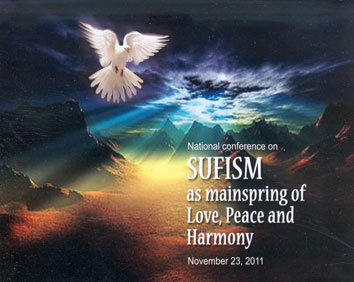

 Julian Ku 古舉倫
Julian Ku 古舉倫  Opinio Juris
Opinio Juris  Rob Howse
Rob Howse 
 Mamata Banerjee @MamataOfficial
Mamata Banerjee @MamataOfficial  Michael Landau @mlcaritas
Michael Landau @mlcaritas  WHO @WHO
WHO @WHO  Christinchen @christl_vd_post
Christinchen @christl_vd_post 

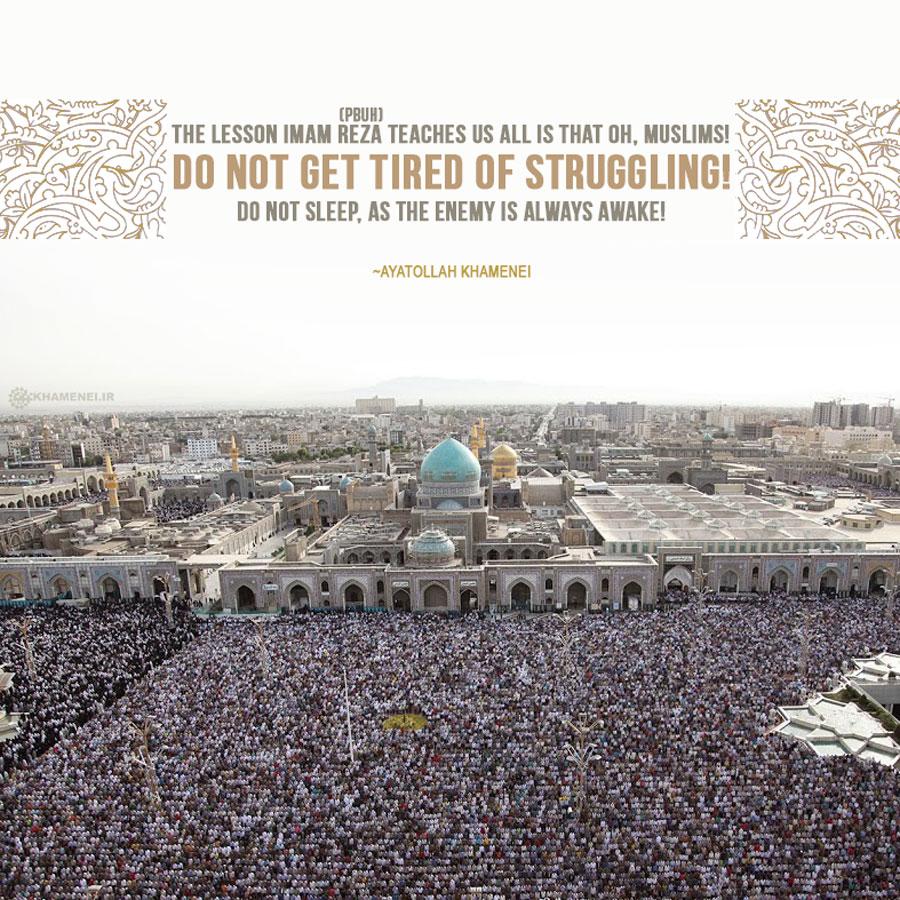


 سلمان العودة @salman_alodah
سلمان العودة @salman_alodah
 KarşÄ� Gazete @karsigazete
KarşÄ� Gazete @karsigazete  Today’s Zaman @todayszamancom
Today’s Zaman @todayszamancom


 Dalai Lama @DalaiLama
Dalai Lama @DalaiLama  Tibet.net Updates @tibet_net
Tibet.net Updates @tibet_net  LAHURNIP @LAHURNIPNepal
LAHURNIP @LAHURNIPNepal  Bretton Woods Proj. @brettonwoodspr
Bretton Woods Proj. @brettonwoodspr PHR @P4HR
PHR @P4HR  CCHR Cambodia @cchrcambodia
CCHR Cambodia @cchrcambodia 
 Birgit Schmeitzner @BSchmeitzner
Birgit Schmeitzner @BSchmeitzner Velina Tchakarova @vtchakarova
Velina Tchakarova @vtchakarova  DK Matai @DKMatai
DK Matai @DKMatai Christian Caryl @ccaryl
Christian Caryl @ccaryl Borzou Daragahi @borzou
Borzou Daragahi @borzou

 UN Vienna @UN_Vienna
UN Vienna @UN_Vienna Lotte Leicht @LotteLeicht1
Lotte Leicht @LotteLeicht1  Nathaniel Raymond @nattyray11
Nathaniel Raymond @nattyray11  Hina Shamsi @HinaShamsi
Hina Shamsi @HinaShamsi Dein Ayurveda Net @DeinAyurvedaNet
Dein Ayurveda Net @DeinAyurvedaNet 